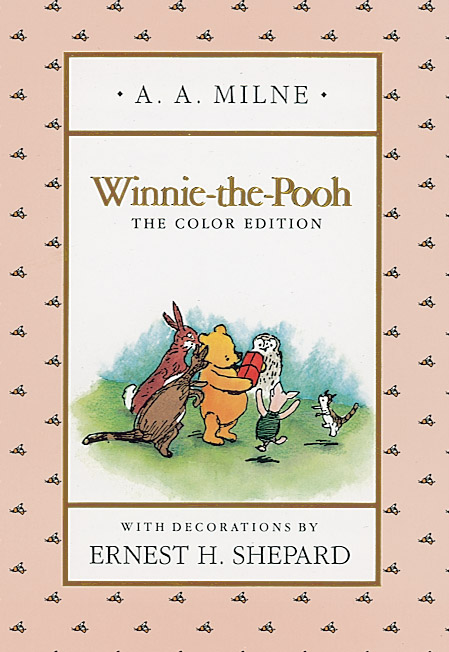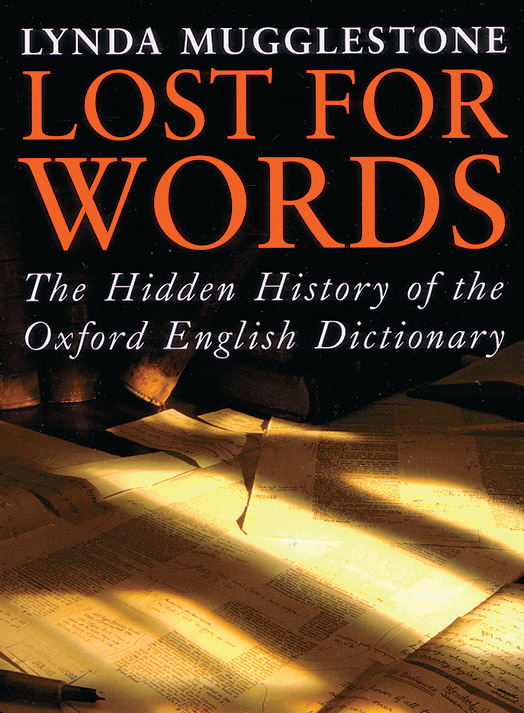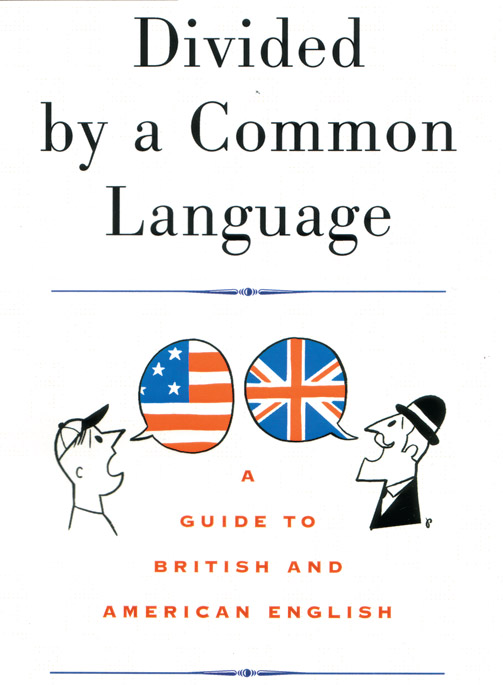
the latest books about Britain
GENERATIONS OF CHILDREN now have taken delight in the company of Christopher Robin, a certain daft Pooh bear and the denizens of the Hundred Acre Wood. Strange as it seems, as Siân Ellis reminds us, some adults have not yet met the heroes of A.A. Milne’s classic—voted sixth in our ongoing series of the most British books. And following up our November feature on Dr. Samuel Johnson’s dictionary and this issue’s article on the King James Bible, we take a look at two recent books that further illuminate our regal English tongue. A rose by any other name, after all, would still smell fragrant.
[caption id="TheLatestBooksAboutBritain_img1" align="aligncenter" width="449"]

Winnie-the-Pooh, by A.A. Milne. Available in many editions, both soft and hardcover.
STRANGE TO SAY, I never read A.A. Milne’s Winnie-the-Pooh as a child. Alice’s Adventures in Wonderland, The Wind in the Willows, yes. But not Pooh. Yet if you mentioned it, I’d have immediately understood who and what you were talking about. I “knew” that greedy “Bear of Very Little Brain” with an overriding penchant for honey, and already pictured him bumbling into and out of adventures with help from his animal friends and Christopher Robin, the son of the storyteller/author. In fact, if you asked me and I had answered before carefully considering (just like the whimsical four-pawed one), I might even have claimed to have read Winnie-the-Pooh—the book seemed so familiar.
What, then, explains the penetration of this story into the shared consciousness of our—real and imagined—childhoods? Why is there a thriving Pooh Country industry centered on Hartfield and the Ashdown Forest in East Sussex, drawing pilgrims (yes, pilgrims) from around the world? For the Brits it can’t simply be that we’re soft about animals (we do love our pets) and so relate without complication to Pooh’s world of anthropomorphized creatures.
Alan Alexander Milne, born 1882, was the son of a Scottish schoolmaster. He read mathematics at Cambridge, but his real inclination was toward writing. Aged 24, he was appointed assistant editor of Punch and, after serving as a signals officer in World War I, he achieved early success as a playwright.
In 1924 Milne and his wife Daphne moved from London to 16th-century Cotchford Farm outside Hartfield on the edge of the Ashdown Forest. That November saw publication of the author’s first book of children’s poems, When We Were Very Young. The verses included one that had already appeared in Punch, relating how “A bear, however hard he tries/Grows tubby without exercise.” He wasn’t yet called Winnie-the-Pooh, but he was on his way—and in Ashdown Forest Milne had found the setting for his bear stories.
Winnie-the-Pooh (1926), Now We Are Six (1927) and The House at Pooh Corner (1928) followed. By the time the latter appeared, sales of its predecessors had broken all records.
When I belatedly read Winnie-the-Pooh, I wasn’t disappointed; the qualities that have endeared it to several generations are many. The protagonists, based on Christopher Robin’s toys, are simply drawn: Pooh is greedy, Eeyore the donkey is gloomily misanthropic, Piglet is timid and so on. But they are also individuals who occasionally transcend their natures—it was Pooh’s brain wave that effected the rescue of Piglet from the flood, after all. Not bad for a Bear of Very Little Brain. Maybe Pooh’s way of “muddling through” even owes something to the perceived British national character!
There’s also an underlying humor to some of the animals’ conversations, perhaps more meaningful to adults than children. Self-important Owl resorts to officialese when confronted with the problem of finding Eeyore’s lost tail (think of bureaucrats you have known, reaching for their handbooks of jargon): “The customary procedure in such cases is as follows.….” After Pooh queries this “Crustimoney Proseedcake,” Owl admits he just means “the Thing to Do.” Those capitals: still so tellingly self-important.
Or maybe Milne’s recurrent use of capitals simply reflects the exaggerated Importance of minor Incidents in a Child’s World, the inflation of the mundane into an Adventure, the investment of Meaning in otherwise casual Happenings. The beauty of Pooh is that the various escapades are usually rooted in the ordinary: birthday presents and parties, feeling hungry and looking for food. Adventures spring from this safely circumscribed world—the weather turns unexpectedly bad, mysterious footprints appear. But even when danger threatens, you don’t get the darkness of Alice or Willows. The mystery is solved and everyone (or at least Pooh) goes home for luncheon—honey, of course. The return to normality is just a few steps away, and the escapade has been contained in a morning or afternoon.
Ironically, Milne came to resent his success in children’s literature at the expense of his other, adult writing. But for generations of children and grownups, the stories of Pooh have attained iconic status that befits their inclusion in the top 10 list of most British books—and explains why I was so familiar with the characters before reading about them for real. These are simple, fun, innocent, reassuringly safe tales. And perhaps above all that’s why they endure. While we still inhabit the imaginative world of Pooh by virtue of our tender age and inexperience, we relate directly to the Adventures that cuddly toy animals Brought to Life can have. When we have left that world, we look back with fondness to an innocence lost—and maybe welcome the chance to cocoon our own children in it.
To see these reviews and hundreds more by leading authorities, go to our new book review section at www.thehistorynet.com/reviews
[caption id="TheLatestBooksAboutBritain_img2" align="aligncenter" width="227"]
[caption id="TheLatestBooksAboutBritain_img3" align="aligncenter" width="524"]

It’s no surprise that adults as much as children enjoy visiting the Pooh Corner shop in Hartfield (www.pooh-country.co.uk), picking up a map and going on an “Expotition” to the real “Enchanted Places” like Poohsticks Bridge featured in Pooh and Pooh Corner. “That Accounts for a Good Deal,” as Eeyore said during the saga of his missing tail. “It Explains Everything.”
SIÂN ELLIS
Lost for Words: The Hidden History of the Oxford English Dictionary, by Lynda Mugglestone, Yale University Press, New Haven, 221 pages, hardcover $30.
IN LOST FOR WORDS, her third book on English-language subjects, Lynda Mugglestone portrays the creation of the Oxford English Dictionary (OED). In 1879 Oxford’s Philological Society commissioned a London schoolmaster of Scottish descent named James Murray to edit a complete dictionary of the English language, one that would offer word histories as well as determine correct usage. Reputedly a man of incomparable intellectual rigor, Murray was well suited to his task. As a young man, he had taught himself Latin, Greek and French, and as he matured he added archaeology, entomology, biology and natural science to his list of serious pursuits.
Mugglestone describes the chance discovery that motivated her to write Lost for Words: “Lying in the basements of Oxford University Press, and in Murray’s own papers at the Bodleian Library in Oxford, innumerable proof sheets together with an abundance of letters and other archival resources, record the often forgotten details by which the dictionary first came into being. The proofs in particular—hitherto almost entirely unexamined—provide an unparalleled scholarly resource, offering a hidden history of the [OED].”
It is that history that Mugglestone skillfully and meticulously conveys. Even though most Britons consider the OED to be as reliable as the sunrise, the dictionary’s creation was a fully human endeavor replete with fallibility. Arguments over definitions and pronunciations, and controversies over which words to include, in fact, shadowed the entire writing process.
Mugglestone imparts particularly well the endless controversy over the dictionary’s scope versus time constraints. “The original contract with Oxford University Press,” explains Mugglestone, “had been signed in 1879, stipulating an allotted time span of 10 years, in an allotted space of four volumes.….Yet by 1889 publication of the dictionary was merely midway through ‘C,’ and in the second of what would turn out to be 10 volumes….The final part of the dictionary appeared in 1928, 49 years after the optimistic projections of the contract that Murray had initially signed.”
Murray had to answer, as Mugglestone notes, to the Philological Society, perhaps one of the most frustrating parts of his job. The society, on the one hand, demanded impeccable scholarship, extraordinary detail and etymological rigor, while on the other hand it pressured Murray to complete the volumes faster. When the writing process began, the society determined that Murray could write six pages of text for every one page of Webster’s Dictionary. When this ratio proved inadequate because of OED’s thoroughness and historical character relative to Webster’s Dictionary, it was relaxed to eight pages to one.
For a time, while Murray was informing the Philological Society that the work would take 16 or 17 years rather than the contractual 10 years, it was agreed that Murray should cover 33 words a day. Mugglestone writes: “Drafting the single entry for ‘approve’ had, however, taken almost a whole day. The word ‘black’ and its derivatives would take over three months. When other elements of writing the dictionary were factored in—such as the reading and correction of the proofs and revisions—it became evident that even 17 years was a serious underestimate of the time which would be needed to complete the dictionary.”
Another facet of the dictionary’s creation that Mugglestone compellingly explores is the use of volunteers in the work effort. It was Murray’s fresh “Appeal to the English-Speaking and English-Reading Public to Read Books and Make Extracts for the Philological Society’s New Dictionary” that he issued upon assuming the editorship that was the effective source of most of the dictionary’s entries.
The “Appeal,” along with lists of books for which it hoped to attract volunteer readers, was widely circulated. Even the popular press commented on it. As a result, hundreds of volunteers sent submission slips to Murray’s Scriptorium, a corrugated iron shed situated in the garden of his house at the Mill-Hill School near London where he still retained some of his teaching duties. Here, with the help of three assistants “of fair education,” Murray sorted the slips into the thousand pigeonholes that line the Scriptorium’s walls.
Mugglestone alludes to the formidable Samuel Johnson, editor of the 1755 Dictionary of the English Language. Apparently many in the Philological Society faulted Johnson for allowing his own personality to invade the pages of the dictionary. Nonetheless, until the OED’s publication, Johnson’s work remained an unrivaled repository of the English language.
Yet Murray’s endeavor, completed in 1928, conclusively surpasses Johnson’s work. As Mugglestone states: “It is now common knowledge among scholars that no discussion as to the origin or meaning of a word can be [legitimate] until one has considered what the OED says….The name Oxford Dictionary is increasingly synonymous with the authoritative investigation of the past and present of the national tongue.”
KATHERINE BAILEY
[caption id="TheLatestBooksAboutBritain_img4" align="aligncenter" width="503"]

Divided by a Common Language: A Guide to British and American English, by Christopher Davies, Houghton Mifflin, New York, 256 pages, hardcover $14.95.
“I don’t know what you mean by ’glory,’” Alice said.
Humpty Dumpty smiled contemptuously. “Of course you don’t—till I tell you. I meant ‘there’s a nice knock-down argument for you!’”
“But ‘glory’ doesn’t mean a ‘nice knock-down argument,’” Alice objected.
“When I use a word,” Humpty Dumpty said, in rather a scornful tone, “it means just what I choose it to mean—neither more nor less.”
IT WAS GEORGE BERNARD SHAW who putatively observed that Britain and America are two countries divided by a common language. Every tourist guidebook and bit of travel writing is bound sooner or later to comment upon the uncommon language we share. Hood or bonnet, lift or elevator, courgette or zucchini: Everyone with a cursory familiarity of speech on both sides of the pond can easily recall plenteous examples of vocabulary differences between British and American English. Now Christopher Davies has produced as exhaustive a comparison of our common languages as I have seen.
In his readable opening chapters, Davies lightly discusses differences that are often cultural as well as linguistic. He begins with a bit of language history and goes on to compare our varied language in categories ranging from plumbing, cooking, education and transportation to etiquette. He explains to an American audience such things as an airing cupboard and a bungalow, and condominiums to the British. Rather than simply compiling lists of vocabulary differences, Davies annotates and illuminates the language for those who would be truly bilingual.
Many pages, of course, are given to a UK-U.S. lexicon, and vice versa. Unquestionably these vocabulary lists are very useful. On this section, however, Davies’marks are fair at best. There are a lot of arcane terms and regionalisms included that I’ve never heard on either side of the Atlantic. An Englishman himself, Davies has resided in Florida since 1980. This would be a somewhat different book if he had lived in Boston. Many of the English locutions he cites need no explanation to New England ears. There aren’t many parts of the country, on the other hand, where you’ll hear the expression “cotton pickin’ hands” these days. And when was the last time you heard anyone refer to a sofa or couch as a davenport?
A nice feature of Davies’ dance with our language is the inclusion of brief lexicons that introduce the idiosyncrasies of New Zealand, Canadian, Australian and South African English as well as a bit on Cockney rhyming slang (which has been heard in the East End of London since the 16th century).
This is a book for lovers of words. It is a lot of fun. In truth, the greater familiarity one has with “comparative English” the weaker and more provincial Davies’ offering will appear. Still, even old hands at transatlantic English will make new discoveries in the use of our Mother Tongue. It is amazing how many euphemistic and slang synonyms for being drunk exist in both countries.
At the end of the day, vocabulary differences do not amount to very much. Vocabulary is the most mutable and adaptive element of language. Our visit with Dr. Johnson’s dictionary in the last BH issue certainly illustrated that point. No, British and American English remain very much a single tongue, and are likely to remain one, particularly in view of the instant global communication we enjoy in the 21st century. As long as we continue to conjugate our verbs the same way, differences in accent and vocabulary are ephemeral. After all, here in the States we may not eat a Christmas pudding, but we know what it means.
DANA HUNTLEY
briefly noted:
Hirschfeld’s British Aisles, by Al Hirschfeld, Glenn Young Books, New York, softcover $39.95.
For over 70 years the inimitable drawings of Al Hirschfeld graced The New York Times’ Arts and Leisure pages. This first-ever portfolio of Hirschfeld’s British subjects showcases his deft portraits of more than 100 legendary British actors and actresses, with commentaries by Julie Andrews, Simon Callow, Lynn Redgrave and more. It is glorious fun. (See “Last Orders, Please!” P. 66.)
Nelson’s Sailors, by Gregory Fremont-Barnes, Osprey Publishing, New York, softcover $16.95.
The British Home Front 1939-1945, by Martin J. Brayley, Osprey Publishing, New York, softcover $16.95.
Osprey Publishing has been well known for their illustrated military history books in Britain for years. Recently they have begun publishing books on broader themes of British history. Here are two clearly written, beautifully illustrated titles on topics regular BH readers will find familiar.





Comments